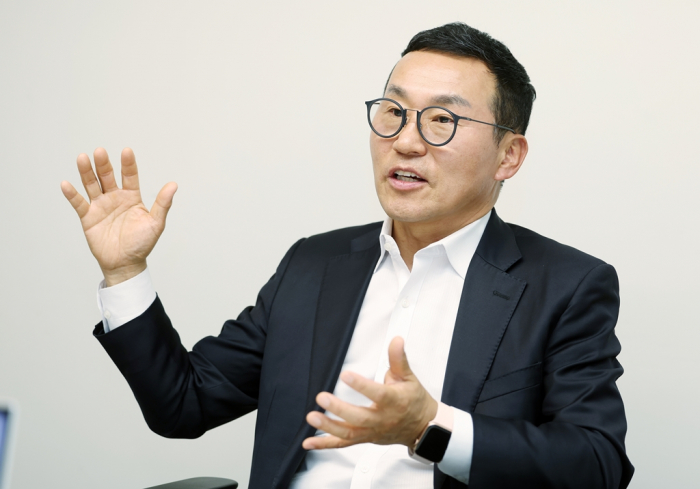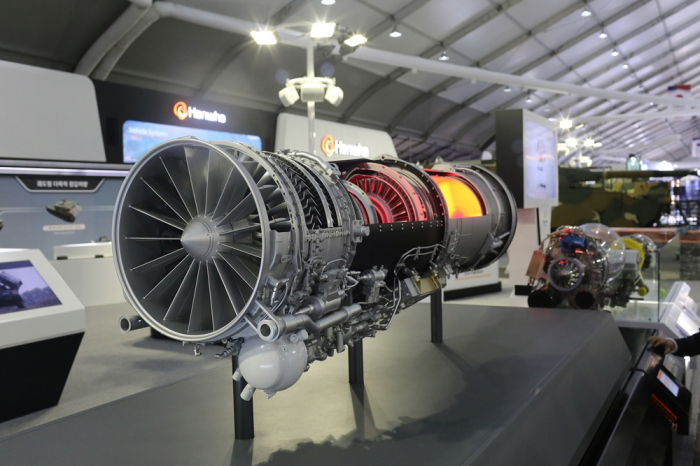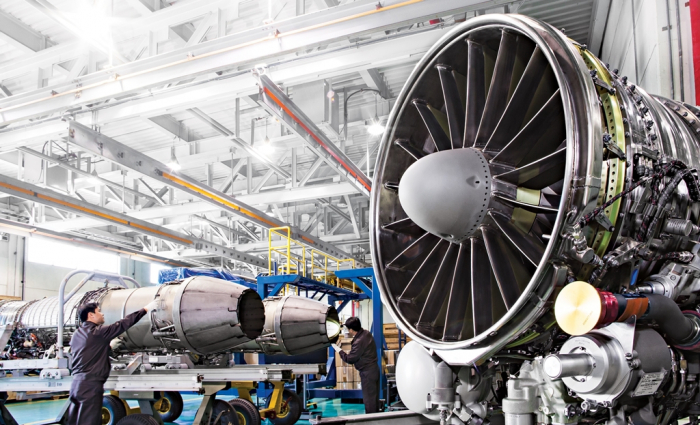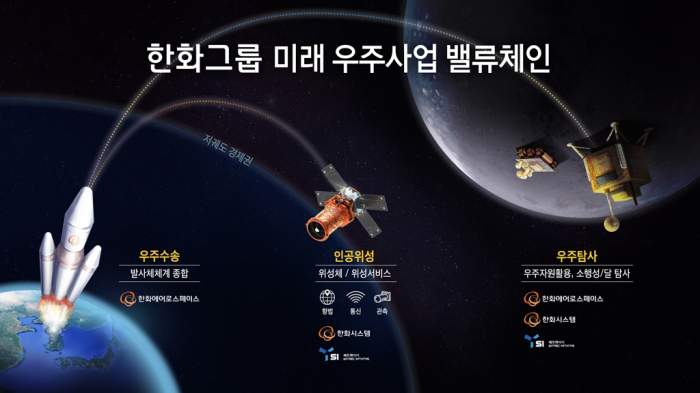Aerospace & Defense
Hanwha aims to develop unmanned fighter jet engine within decade
Hong, formerly a Korea Air Force vice marshal, is a speaker at Strong Korea Forum 2023, a defense industry business forum
By May 24, 2023 (Gmt+09:00)
3
Min read
Most Read
MBK’s Korea Zinc takeover attempt to spur search for white knights


Korea Zinc, MBK face proxy war for zinc smelter


Korea Zinc shares skyrocket after buybacks in tender offer


Lotte to liquidate rubber JV in Malaysia, sell overseas assets for $1 bn


Samsung to unveil 400-layer bonding vertical NAND for AI servers by 2026



Hanwha Aerospace Co., South Korea’s answer to Elon Musk’s SpaceX, aims to develop engines for unmanned aircraft within the next decade to enhance its presence in the aerospace and defense market.
Hong Jaeki, a Hanwha Aerospace vice president, said the successful development of such engines would also strengthen the Korean military’s warfare capabilities as well as widen Hanwha’s revenue source to the engine maintenance, repair and overhaul (MRO) business.
“Engines are the last area in the Korean defense industry where Koreans have not achieved localization. We aim to domestically develop engines, the heart of unmanned aerial vehicles, within 10 years,” Hong said in a recent interview with The Korea Economic Daily.
Hong, formerly a Republic of Korea Air Force vice marshal, is one of the speakers at Strong Korea Forum 2023, a science and defense industry business forum organized by the newspaper and the Ministry of Science and ICT. The forum opened Wednesday in Seoul.
Engines account for more than 40% of the total production cost of unmanned aerial vehicles, which are emerging as a game-changer on the battlefield.

High-performance engines are critical to the advancement of fighter aircraft, missiles and space aircraft and are considered the final puzzle piece in completing the competitiveness of the Korean defense or K-Defense industry.
“Developing an engine with our own technology is very challenging. People think it will take 12 to 13 years to develop one. But we will advance it by three years,” the Hanwha executive said.
Hanwha Aerospace, the aircraft engine parts-making unit of Hanwha Group, aims to develop a 15,000-pound engine that can be installed on medium-sized unmanned combat aircraft by 2035, he said.
With the successful development of such engines, Hanwha also plans to join an unmanned aerial vehicle engine project to be launched by the military and the Defense Acquisition Program Administration in 2025.
MRO BUSINESS
"If we localize such engines, we can also secure the engine MRO business as a new source of revenue,” Hong said.
According to market research firm TiL Group, the global unmanned aerial vehicle market is forecast to grow from $16.3 billion in 2020 to $38.6 billion by 2030.

With the technological know-how learned from unmanned aerial vehicle engines, Hanwha Aerospace also plans to eventually enter the manned and civil aircraft engine business.
Hanwha’s efforts to develop aircraft engines are expected to help the military diversify the types of unmanned aerial vehicles.
Instead of importing reconnaissance drones, the military will be able to deploy domestically produced bombing and combat drones on the battlefield, industry officials said.
“With the declining Korean population, the number of fighter jet pilots is also falling. In the near future, several unmanned aerial vehicles alongside a manned fighter jet engaging in tactical warfare as a team will become a new normal,” Hong said.
AEROSPACE BUSINESS
Starting out as a gas turbine engine repair and maintenance company in 1979, Hanwha Aerospace has expanded its business scope to aircraft engines and components, producing more than 9,000 engines since its launch.

The company is supplying engine parts to the world’s three major aircraft engine manufacturers – US-based Pratt & Whitney (P&W) and General Electric (GE) as well as Britain’s Rolls-Royce.
In May 2021, the company won a $320 million deal to supply aircraft engine parts to General Electric.
Earlier that year, Hanwha was certified to conduct the quality checks on aircraft engine parts it supplies to Rolls-Royce, becoming the first partner company of the UK firm to achieve the highest level of the Production Part Approval Process (PPAP) certification.
Hanwha Group has also been spending heavily on its aerospace business since the 2020 launch of Space Hub, a group-wide task force handling all future mobility-related projects.
Last December, Hanwha Aerospace said it planned four additional launches of the country’s first homegrown space rocket, Nuri, by 2027 as part of a 286 billion won ($220 million) government project.
Write to Hyung-Kyu Kim at khk@hankyung.com
In-Soo Nam edited this article.
More to Read
-
 Aerospace & DefenseHanwha Aerospace secures tech to catch illegal drones using nets
Aerospace & DefenseHanwha Aerospace secures tech to catch illegal drones using netsFeb 23, 2023 (Gmt+09:00)
1 Min read -
 Aerospace & DefenseHanwha Aerospace to launch 4 more Nuri rockets under $220 mn project
Aerospace & DefenseHanwha Aerospace to launch 4 more Nuri rockets under $220 mn projectDec 02, 2022 (Gmt+09:00)
2 Min read -
 Mergers & AcquisitionsHanwha Aerospace, Hanwha Defense likely to merge
Mergers & AcquisitionsHanwha Aerospace, Hanwha Defense likely to mergeJul 25, 2022 (Gmt+09:00)
5 Min read -
 AirlinesHanwha Aerospace in $320 mn deal to supply aircraft engine parts to GE
AirlinesHanwha Aerospace in $320 mn deal to supply aircraft engine parts to GEMay 25, 2021 (Gmt+09:00)
1 Min read -
 AirlinesHanwha Aerospace certified to verify Rolls-Royce aircraft engine parts
AirlinesHanwha Aerospace certified to verify Rolls-Royce aircraft engine partsJan 19, 2021 (Gmt+09:00)
2 Min read
Comment 0
LOG IN


